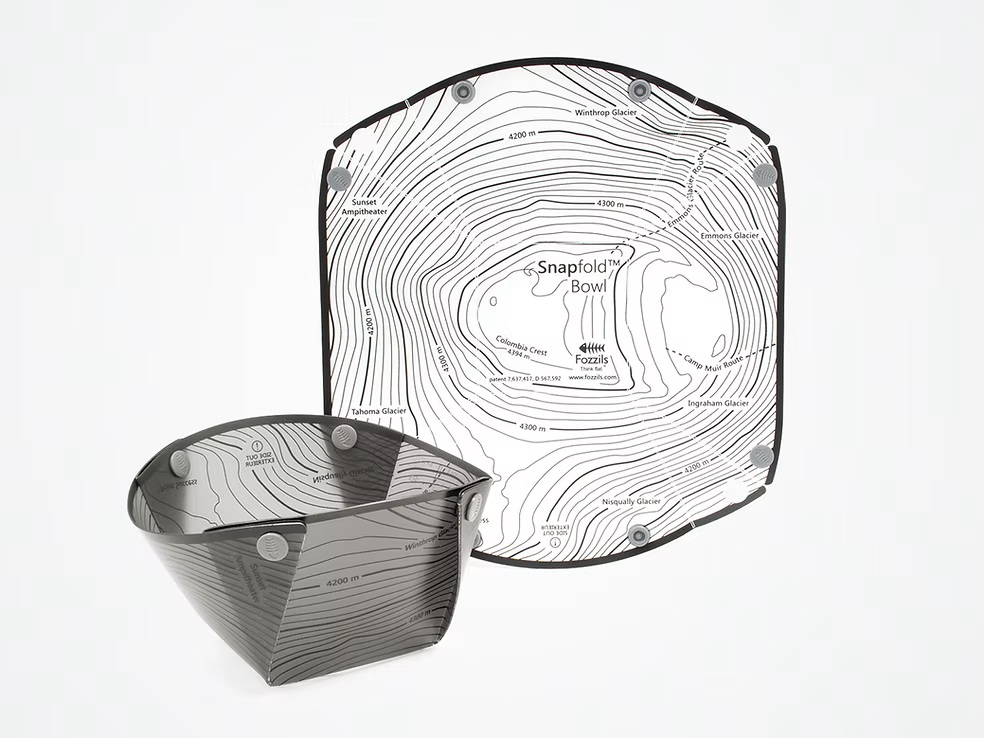With over 5,000' of vertical off of the summit, skiing conditions typically lasting through early summer, and enough varied terrain to keep every skier happy, Mt. Baker is one of the most enjoyable ski mountaineering peaks in the Pacific Northwest.
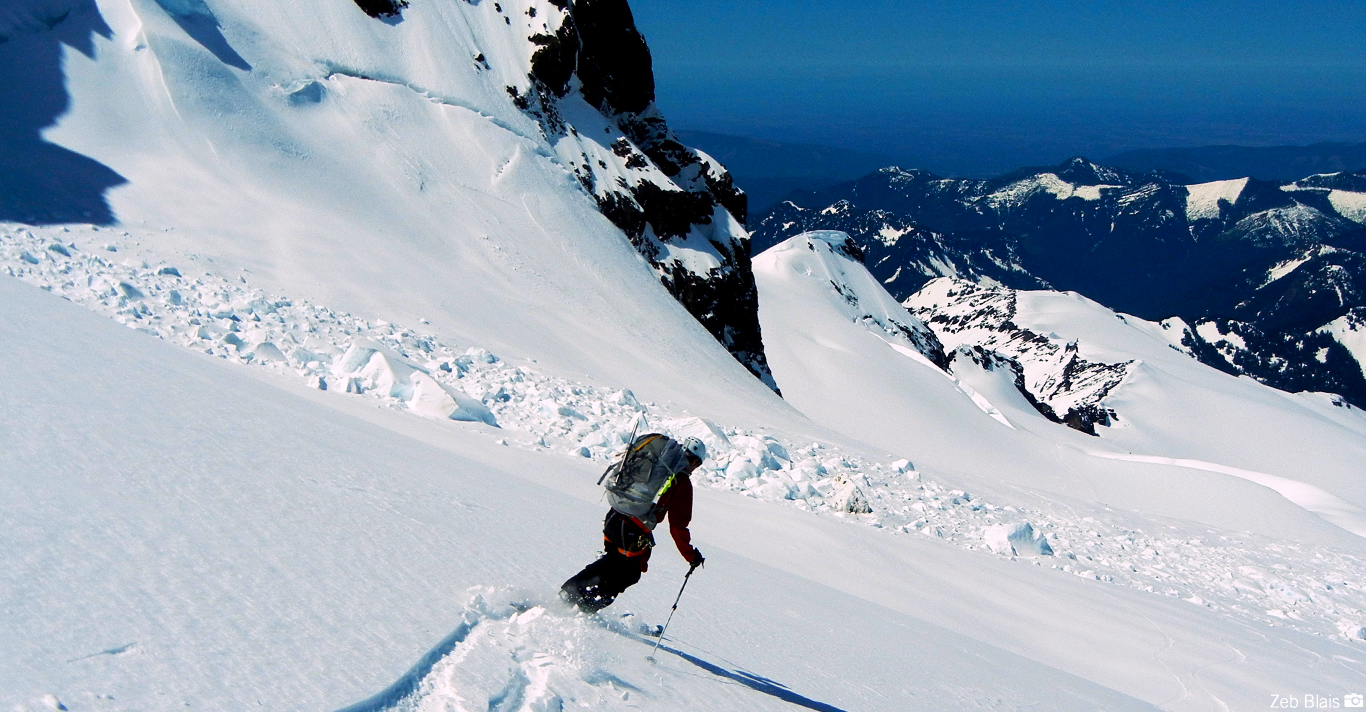
CLIMB HIGHLIGHTS
- A ski descent of over 7000' off of the top of one of the Northwest's premier peaks.
- A full day on the alpine terrain surrounding camp, fine tuning ski mountaineering techniques and preparing for our summit bid.
- RMI ski and alpine guides trained to the highest standards. Take part in an RMI adventure and see why we continue to set the standard in guiding excellence.
The heavy winter storms of the Pacific Northwest leave Mt. Baker's Coleman, Deming, and Easton glaciers smooth and blanketed with large fields of white each spring. The perfect playground for skiers who like a LOT of vertical descent. With a day of ski mountaineering training, a majestic northwest summit, and over a vertical mile of turns on the descent, a guided summit ski descent of Mt. Baker is one of the best three day adventures imaginable. The skiing at its steepest reaches 35+ degrees on the Roman Wall. This program is for very fit, advanced skiers with a great sense of adventure. This is a great preparatory program for Chile - Ski Mountaineering.
This trip is open to all individuals in excellent physical condition, with "advanced" downhill skiing or riding ability, and previous ski touring experience. Participants should feel comfortable on black diamond terrain in ski areas, and be able to ski a variety of off-piste (ungroomed) snow conditions. Participants should be able to ascend and descend 5,000 vertical feet in a day of backcountry touring, carrying a 15-20 lb backpack, or 3,000 vertical feet carrying a 35-40lb backpack.
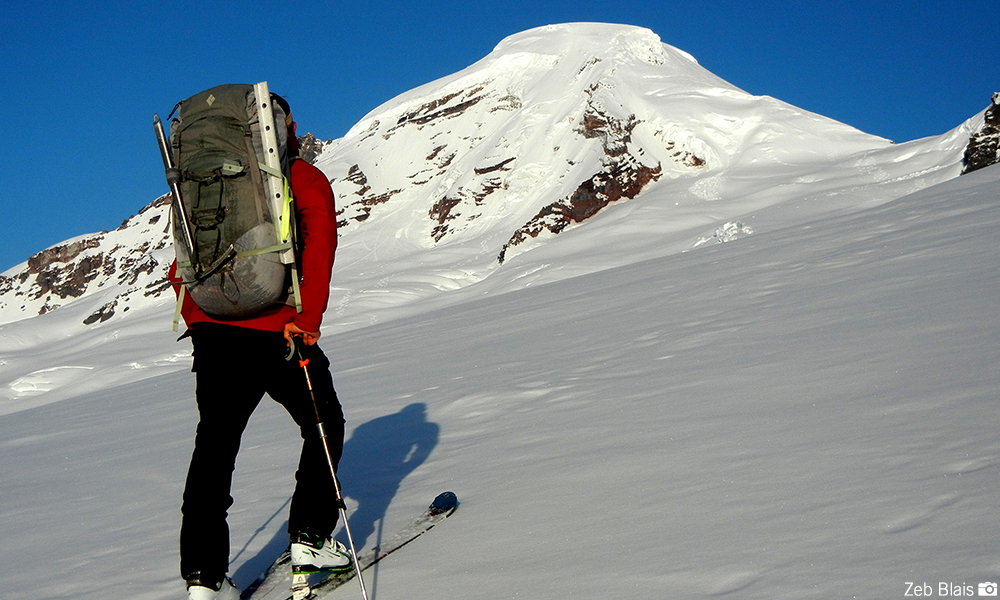
THE RMI DIFFERENCE
The Mountain Guides at RMI have forged an unrivaled reputation as the leading alpine guides in the United States. With deep experience from some of America’s Himalayan explorations, our guides draw from years of expedition guiding and alpine climbing worldwide, ensuring each program is led by consummate professionals with a wealth of experience.
Renowned for their leadership and character, our guides are celebrated teachers and trainers, known for their leadership as well as their character. They possess a rare blend of compassion, enthusiasm and the capacity to empower others to obtain new heights. These are qualities that can only be found in those at the pinnacle of their profession. Despite their vast experience, RMI Guides still remember their own humble beginnings in the mountains and take immense satisfaction in assisting other climbers to reach their goals.
At RMI, the security and wellbeing of our clients and guides are our highest priorities. Our guides undergo formal avalanche and technical rescue training, receive certification in remote medicine training (WFR or comparable), carry comprehensive medical and rescue kits as well as radio communication equipment, and participate in continuing education each year. Additionally, every climb involves thorough pre-trip planning, weather and avalanche forecasts, and meticulous attention to detail.
Our commitment to detail, unparalleled focus on individual climbers, dedication to improving our craft, and genuine enthusiasm for these adventures make for an unforgettable experience.
As you prepare for your upcoming adventure, please feel free to contact our office and speak directly to one of our experienced guides regarding equipment, conditioning, the route, or any other questions you may have about our programs. We are available Monday thru Friday 8:30 a.m. to 4:00 p.m. at (888) 89-CLIMB or [email protected].

 Authorized Special Use Permit
Authorized Special Use Permit
RMI Expeditions is operated under special use permit with the Mt. Baker-Snoqualmie National Forest.
“In accordance with Federal law and U.S. Department of Agriculture policy, this institution is prohibited from discriminating on the basis of race, color, national origin, sex, age or disability. To file a complaint of discrimination: write USDA, Director, Office of Civil Rights, Room 326-W, Whitten Building, 1400 Independence Avenue, SW, Washington, D.C. 20250-9410 or call (202) 720-5964 (voice and TDD).”
Travel Consultant
RMI has partnered with Erin Rountree to provide comprehensive travel support. We have been working with Erin for many years. As an independent agent of the Travel Society, she has booked countless miles for adventure travelers across the globe and is extremely knowledgeable about the travel needs of our programs. Please call (208) 788-2870 or send email to [email protected].
Travel Insurance
We highly recommend travel insurance for this trip.
Your travel insurance policy should include trip cancellation, trip interruption, travel delay, baggage loss or delay, medical expenses, and evacuation.
Navigating through the different options for travel insurance can be challenging. When purchasing Travel Insurance, here are a few items to consider:
- Read the fine print. Travel Insurance offers reimbursement when you must cancel your trip for an eligible reason for prepaid, non-refundable trip costs that you insure. However, there are exclusions, so make sure you understand the "eligible reasons."
- Confirm that your activity is an eligible "activity." Not all travel insurance policies will offer coverage for activities such as mountaineering, climbing, skiing, or trekking adventures. Policies can also exclude coverage for activities due to the gear used (crampons, ice axe), activities that go above specific elevations, or activities in a particular region of the world. If there are exclusions, you may need to add an "Adventure" or "Sports" package to help cover your activity.
- Verify that your state of residence is allowed with the policy that you are purchasing. Not all insurance companies offer policies in all 50 states.
- Contact your travel protection company directly for any questions you have regarding benefits or coverage.
TRAVELEX
In today’s changing travel environment, it’s important to protect your travel investment. Unforeseen events such as flight delays, baggage loss or even a sudden sickness or injury could impact your travel plans. For your convenience, we offer Travelex Insurance protection plans to help protect you and your travel investment against the unexpected.
For more information on the available plans visit Travelex Insurance Services or contact Travelex Insurance (800) 228-9792 and reference location number 47-0370.
The product descriptions provided here are only brief summaries and may be changed without notice. The full coverage terms and details, including limitations and exclusions, are contained in the insurance policy. Travelex Insurance Services, Inc. CA Agency License #0D10209. Insurance coverages underwritten by individual member companies of Zurich in North America, including Zurich American Insurance Company (NAIC #16535, state of domicile: New York). RETWEB
harbor
Harbor Travel Insurance covers the following critical benefits:
- Evacuation to a nearest appropriate hospital once hospitalized.
- Trip cancellation/interruption, primary medical expense coverage, sporting goods, baggage loss, emergency dental, AD&D, and more.
- Completely integrated one-stop program with a single contact for emergency services to travel assistance and insurance claims
- 24/7 access to paramedics, nurses, and military veterans.
Harbor Travel Insurance is powered by Redpoint Resolutions, a medical and travel security risk company. Their team is comprised of special operations veterans, paramedics, Stanford Medicine affiliated physicians, former intelligence officers, insurance actuaries, and global security experts with dozens of years of experience in theaters around the world. The Redpoint network covers the globe, making them uniquely equipped to provide elite rescue travel insurance – in every sense of the word.
Getting There
You are responsible for your own transportation to the program's trailhead. Most climbers will fly into Seattle-Tacoma International Airport (SEA) the evening before the program and rent a car for the 1 3/4 hour drive. The town of Mt. Vernon is approximately 76 miles and an hour and twenty minutes from SeaTac depending on traffic congestion. You will find a few more hotel and breakfast options here than in Sedro-Woolley. The small town of Sedro-Woolley, "The Gateway to the North Cascades", is approximately an hour and forty minutes from SeaTac. Our meeting place is Bingham Park, 322 W Munro Street in Sedro-Woolley. We meet at 7:00 a.m. Click here for driving directions.
Note: Beginning May 7, 2025, every air traveler 18 years of age and older will need a REAL ID compliant driver’s license, state-issued enhanced driver’s license, or another acceptable form of ID to fly within the United States.
After a team meeting we drive to the climb's trailhead. You will need a Northwest Forest Service parking pass to leave your car at the trailhead. Passes are $30 and valid for one year. There may be an opportunity to leave some vehicles at the Ranger Station and carpool with other team members. Northwest Forest Service parking passes are available for sale at the ranger station.
Ride Share: If you are participating in a climb and are interested in sharing a ride, please post your information in the "Ride Share" forum of your North Cascades Discussion Board by logging into your RMI Account.
Area Accommodations
Spend the night in either Sedro Woolley or the nearby town of Mt. Vernon.
Weather
For updated North Cascades weather forecasts, click here.
Tipping
Our guides put considerable effort into ensuring your safety and success on the mountain. If you had a positive experience, leaving a gratuity is a wonderful gesture to show your appreciation. The amount is up to you and should reflect how much you enjoyed the service. Typically, tips for excellent service range from 10% to 15% of the program cost. Guides can accept gratuities in cash, Venmo, or by check. If you prefer, you can also pay tips using a credit card through the RMI Office.
Facts
Mt. Baker holds the record for the most recorded snowfall in a single season at 1,140 inches.
Mt. Baker was volcanically active as recently as 1891.
For more facts click here, and for even more click here.
Resources
General Information on Mt. Baker.
Qualifications
This trip is open to all individuals in excellent physical condition, with "Advanced" downhill skiing or riding ability, and previous ski touring experience. Participants should feel comfortable on black diamond terrain in ski areas, skiing in a variety of off-piste (ungroomed) snow conditions. If split-boarding, participants should be an "expert" in transitioning their board.
Participants should be able to ascend and descend 5,000' vertical feet in a day of backcountry touring, carrying a 15-20 lb backpack, or 3,000' vertical feet carrying a 35-40lb backpack.
Qualifying Programs
Recommended climbing experiences prior to Mt. Baker Summit and Ski Descent include:
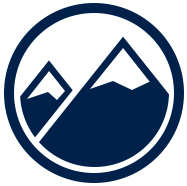
Get In The Best Shape Of Your Life And Then Go Climb A Mountain
Create A Fitness And Training Program
Physical Fitness Training
Mountaineering requires a high degree of physical stamina and mental toughness. Even for the healthiest and fittest individuals, climbing mountains qualifies as an extremely challenging endeavor.
- Start immediately. Start a rigorous fitness and training program now with the goal of arriving in top physical condition and confident in your skills.
- Be intentional. Focus on gaining the necessary strength, stamina and skills to meet the physical and technical demands of the climb.
- Be sport-specific. The best fitness and training program mimics the physical and technical demands of your climbing objective. The closer you get to your program date, the more your training should resemble the climbing.
For the Mt. Baker Summit and Ski Descent you are preparing for:
- Steep ski touring, climbing and glacier travel with a 40-45 lb load (Your personal clothing, gear, food and a portion of group equipment)
- A 12+ hour summit day
- Mountaineering techniques requiring core strength and flexibility
Nothing ensures a personally successful adventure like your level of fitness and training. Bottom line: Plan on being in the best shape of your life and ready for a very challenging adventure!
Below are approximate outlines of the program's physical demands that will be helpful in planning your training schedule and goals:
|
Total Climbing Time
|
Elevation Gain / Loss
|
Total Distance
|
Pack Weight
|
| DAY 1 — Hike to Sandy Camp | |||
|
4 - 5 Hours
|
Gain = 2,600' |
4 Miles
|
40 - 45 lb
|
| DAY 2 — Mountaineering School | |||
|
8 Hours
|
n/a
|
n/a
|
20 - 25 lb
|
| DAY 3 — Summit Day and Descent to Trailhead | |||
|
12+ Hours
|
Gain = 4,980'
Loss = 7,180'
|
9 Miles Round Trip
|
40 - 45 lb
|
Please refer to our Resources for Mountaineering Fitness and Training for detailed fitness and training information.
Acclimatization
No acclimatization is necessary for this program.
What You’ll Need
A list of required personal equipment accompanies every RMI program, and the thought process behind each item is much greater than simply “preparing for the worst and hoping for the best.” The list for your program takes into account factors such as: seasonality, route conditions, weather, elevation and more. As such, this list is framed within the broadest of contexts and is dynamic by its very nature. Therefore, certain variables (additions and/or subtractions) are inherent within such an all-encompassing list. We make every effort to recommend only top of the line clothing and technical gear and it is never our intention for you to buy or rent unnecessary gear.
The Guide Pick is an example of the listed item, giving you an idea of the material and specifications of the item. This exact item does not need to be purchased or used; however, any item you choose must have similar characteristics and performance abilities to the Guide Pick.
RMI Guides concur on the potential necessity of every item, thus every item on the list is required at gear check. However, guides may also have suggestions derived from their experience, some of which will vary from a given list. The guides’ recommendation whether to bring along or leave behind certain item(s) comes during the gear check, when the team first meets. Occasionally this recommendation comes at the expense of having previously purchased an item. If a guide presents the option of leaving behind certain item(s) on the list of required equipment, it is for a reason. Their recommendation may be related to the weather, route conditions, freezing level, perceived strength of the party, or desired pack weight.
Ultimately, there will never be a consensus for a “perfect” equipment list for an ascent. It does not exist because of the multitude of variables faced by climbers throughout the climb. Please follow this equipment list closely so that you will arrive for the gear check with all the required items. Keep in mind the list is not black and white, fine tuning will occur once you meet with your guide. Have a great climb!
If you are planning on renting gear for your climb, there are three options. Please note rental items are not shipped. Pick-up/Drop-off is at the store location.
Northwest Mountain Shop - 820 Metcalf Street, Sedro-Woolley, WA 98284 | Phone: (360) 854-8761. Most of the required equipment is available for rent or purchase. Equipment can be reserved online.
Backcountry Essentials - 214 W Holly Street, Bellingham, WA 98225 | (360) 543-5678. Many of the required equipment items are available for rent or purchase. Equipment can be reserved online.
The Equipment Shop - American Alpine Institute - 1513 12th Street, Bellingham, WA 98225 | (360) 671-1570. Most of the required equipment is available for rent or purchase. Equipment can be reserved online.
Equipment List
Pack & Travel
We recommend traveling with a ski bag large enough to accommodate skis, poles, and extra gear that might not fit in your duffel.
Your pack must be large enough for your layers, climbing gear, and food, as well as a portion of your tent and your share of group equipment. You will not need a separate summit pack.
Sleeping Bag & Pad
We recommend a bag rated between 20° and 0° F. Allow ample room for movement. We recommend down over synthetic for its light weight, warmth, and packability. If climbing in April, May, June, or September, or if you know you sleep cold, consider a 0° F bag.
Full-length inflatable or closed cell pad.
Technical Gear
We recommend a short, lightweight ice axe designed for ski touring and ski mountaineering. If you already own a general-pupose ice axe this will work as well.
We recommend a comfortable, adjustable alpine climbing harness. Removable, drop seat, or adjustable leg loops are convenient for managing your clothing layers over the course of the climb and facilitate going to the bathroom.
Used for clipping into the climbing rope.
Used for clipping into anchors, etc.
10-point or 12-point adjustable crampons which fit your ski boots and are designed for general mountaineering. If using a ski boot, a "fully automatic" clip-in crampon with metal toe bail works best. If using snowboard boots - a strap-on crampon with plastic toe and heel bails works best. These are essential-- check with the RMI Office if you need more information.
Bring extra batteries appropriate to the duration of the climb.
All skis and boards need to have brakes or retention straps. We strongly recommend having a tech binding on your skis. Not a 50/50 binding.
A crampon specific to your ski binding which is used for ascending firm slopes with skis on.
Adjustable ski poles are required; one pole must be a self-arrest tool.
Head
A UIAA (Union Internationale des Associations d’Alpinisme) or CE (European Committee for Standardization) certified climbing helmet or a ski mountaineering helmet rated from both rock fall and skiing falls. Standard ski helmets are not acceptable. They are not rated for rockfall and are too warm to be worn during ascents.
Wool or synthetic. It should provide warmth but also be thin enough to fit underneath a climbing helmet.
A hat without a button on top will fit better and be more comfortable under a helmet.
A Buff provides versatile head and neck protection. A neck gaiter is also acceptable.
Start with fresh batteries and bring extra set(s) of batteries appropriate to the duration of the trip.
Glacier glasses are protective sunglasses that provide close to 100% frame coverage (wrap-around frames and side shields ensure no light can enter from the top, bottom, and sides of the glasses) and transmit less than 10% of visual light.
Amber or rose-tinted goggles for adverse weather. On windy days, climbers, especially contact lens wearers, may find photochromatic lenses the most versatile in a variety of light conditions.
Hands
Each glove layer is worn separately as conditions change during the climb.
Light weight liner or softshell gloves. Lighter colors absorb less sunlight while still offering UV protection.
Wind- and water-resistant, insulated mountain gloves.
Upper Body
We recommend a minimum of five upper body layers, all of which can be used in conjunction with each other. Two of these should be insulating layers, one light, and one medium, that fit well together. Today there are many different layering systems to choose from, including fleece, softshell, down, and synthetic options.
Long-sleeve wool or synthetic top. Light weight, light-colored, hooded baselayers (sun hoodys) are highly recommended for sun protection.
One step up in warmth and bulk from a baselayer. A technical fleece makes an ideal light weight insulating layer.
A down, synthetic, or softshell hoody makes a great midlayer.
An uninsulated, waterproof shell jacket with hood.
Your down or synthetic jacket should must have an insulated hood and be able to fit over the rest of your upper body layers. It will be worn primarily in camp and at rest breaks on summit day
We recommend a moisture-wicking, active-wear bra.
Lower Body
We recommend a system of four layers, all of which can be used in conjunction with each other. Products which combine several layers into one garment, such as traditional ski pants, don’t work well as they don’t offer the versatility of a layering system.
Non-cotton briefs or boxers.
Synthetic or wool.
A lightweight, well ventilated soft-shell or hard-shell ski or climbing pant that fits over the cuff of your ski boots.
Non-insulated, waterproof shell pants must be able to fit comfortable over your baselayer bottoms and softshell climbing pants. Full side zippers or 7/8 side zippers are required so that shell pants can be put on while wearing boots and crampons.
Feet
Whether used for Alpine Touring, Telemark, or Snowboard, your boots should be of a design that allows climbing crampons, and is sturdy enough for variable snow conditions. Please call our office to speak with a guide about ski and snowboard boot recommendations.
Either wool or synthetic. Whatever sock combination you are accustomed to wearing during your training or previous adventures (whether single medium weight socks, a medium weight with a liner sock, two medium weight socks together, etc.), should work just fine for this climb.
First Aid & Medications
Our guides carry comprehensive medical kits, so keep yours small and light. We recommend a selection of adhesive bandages, antibiotic ointment, Moleskin and blister care, medical tape and/or duct tape, basic pain reliever, and personal medications.
Personal Items
See the Food tab for suggestions and quantities.
Packable plastic bowl. Collapsable models can work but must be handled carefully to avoid unintended collapsing. A lid is a great feature.
Insulated outdoor-style mug. We recommend a model with a removable lid, which helps retain heat and prevent spills. You may also choose to use 0.5L insulated bottle or a 0.5L Nalgene.
A spoon or spork made of durable plastic or anodized metal. A long-handled spoon can be nice, especially if eating from a freeze-dried meal pouch.
One-liter water bottles with wide mouths made of co-polyester (BPA-free plastic).
Chlorine Dioxide water purification drops. Make sure to select the 30-minute version.
Heavy-duty trash compacter bags for use as waterproof pack/stuff sack liners. You can also use a waterproof pack liner.
Include toilet paper, hand sanitizer, toothbrush and toothpaste, and wet wipes. Bring a quantity appropriate to the duration of your trip.
We recommend small tubes of SPF 30 or higher, which can be carried in pockets for easy access and to prevent freezing.
Spare prescription glasses if you wear contact lenses/eyeglasses.
Practice using this before coming on the climb!
One clearly-marked wide-mouth or collapsible bottle for overnight use.
Many smartphones have excellent cameras. Action cameras, small point-and-shoots, and compact dSLRs are lightweight and work well at altitude.
A small power bank, enough to charge a phone or e-reader several times.
Travel Clothes
We recommend bringing a selection of clothing to wear while traveling, sightseeing and dining.
Pre-Trip Checklist
Purchase travel insurance.
Purchase airplane tickets.
Arrange transportation and lodging.
Reserve rental equipment.
Be in the best shape of your life!
Provided Equipment
RMI provides the following equipment for your program: tents, stoves, group cooking equipment, fuel, climbing ropes and anchors, and blue bags (for solid waste disposal).
Every guide on your climb will carry rescue equipment and a first aid kit. Each climb has two-way radios and a cell phone for emergency contact.
MEALS
On the Mt. Baker Summit and Ski Descent you will need 3 mountain lunches, 2 dinners, and 2 breakfasts while on the mountain.
OVERVIEW
Nutrition while training and nutrition while climbing are two very different things. You may follow a specific nutrition regimen while training to aid your desired outcomes, but once it comes to the climb, calories are what count the most. While climbing, you are trying to maximize energy and performance over a short period of time.
Our food priorities when climbing are:
- a high-calorie intake
- a variety of flavor profiles (sweet, salty, sour, etc.)
- durability/packability
- enjoyment
Caloric requirements will vary widely from climber to climber based on physical size and metabolism. It is important for you to know what your body requires. One of the normal, albeit disconcerting, adjustments to altitude is a slight loss of appetite. Bring food you enjoy. If you don't love a food at home, you certainly won't like it on the mountain!
Ample hot and cold water will be provided for your meals, drinks, and refilling water bottles. When planning your menu, don't bring any items that require extensive preparation, cooking, or simmering. We are able to provide you with boiling water but do not have the ability to actually cook food items.
Things to keep in mind as you plan your meals:
- How much space the food will take in your backpack
- How well the food will hold up throughout the trip in your backpack
- How much waste does the food produce
Consider repacking items into smaller Ziploc bags to minimize the space in your pack. Your food will get crammed into your backpack, jostled around, exposed to extreme temperatures, and even sat on (by you, of course!). What holds up better in these conditions, two slices of bread or a bagel? When packing, it is essential to consider the waste you will produce on the climb; after all, you have to carry it off the mountain. We've already mentioned repacking items to minimize space. Repacking items can also eliminate waste!
MOUNTAIN LUNCHES
Mountain lunches, aka snacks, are eaten during short breaks throughout the day. We continually snack to keep our energy levels up while we climb. We typically take rest breaks every hour or so to adjust our clothing layers, eat, and hydrate. Avoid packing any items that require preparation or hot water at each break. In terms of quantity, aim to bring 1 lb. of climbing food per day. We suggest using snack or sandwich size Ziploc bags to portion out snack food.
The importance of having foods that you genuinely enjoy cannot be overstated. Eating properly is the key to maintaining strength while in the mountains. To combat the loss of appetite at altitude, we aim to have a variety of foods that stimulate the whole palate, from sweet to sour to salty. See the sample menu and packing list below for ideas!

| • Cold pizza | • Bagel sandwich | • Tortilla wraps | • Chips |
| • Trail mix | • Peanut butter pretzels | • Chocolate covered pretzels | • Apple slices |
| • Crackers | • Cookies | • Candy bars | • Protein bars |
| • Chewy candy | • Veggies and hummus | ||
| PRO TIP: Feel fancy! Charcuterie (cured meat, cheese, and crackers) makes a great mountain lunch! |
|||
Breakfast
Single-serving instant oatmeal, Cream-of-Wheat, or granola make a good main course fare. A variety of granola bars, pastries, fruit, and a hot drink mix of coffee, tea, cocoa, or cider are suggested. Plan on eating a breakfast that tastes good and that you find filling. See the sample menu and packing list below for additional ideas!

| • Instant hot cereal (Oatmeal, Cream-of-Wheat, Cream-of-Rice, etc.) | |||
| • Granola or cereal | |||
| • Freeze-dried breakfast (Mountain House, Peak Refuel, Mountain Zora, and Katadyn's Alpine Aire all have breakfast options) | |||
| • Add-ins such as individual servings of peanut butter or honey, raisins or craisins, or a few tablespoons of powdered milk can put your mountain cereal game over the top. | |||
| PRO TIP: Think outside the box. Peanut butter and jelly sandwiches (on bagels) or ramen make great breakfast options! |
Dinner
This meal will give your body the initial fuel it needs during your summit attempt. Spend time considering your options so that you go to bed nourished and ready for the climb ahead of you. Freeze-dried entrees are very convenient mountain dinners. Pay attention to the caloric quantity – it varies from meal to meal. See the sample menu and packing list below for more ideas!
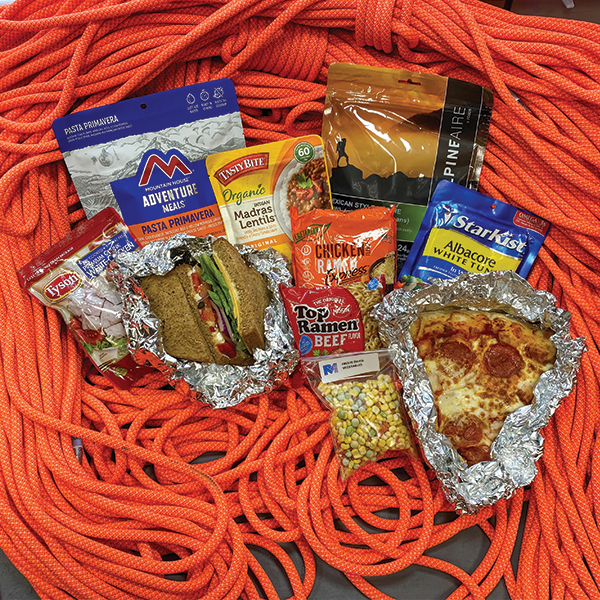
| • Freeze-dried entrée (Mountain House, Peak Refuel, Mountain Zora, and Katadyn's Alpine Aire have a wide variety of options) | |||
| • Instant soups (including Cup-o'Noodles and ramen) | |||
| • Cold pizza | |||
| • Cold fried chicken | |||
| • Pasta salad | |||
| • Bagel sandwich | |||
| PRO TIP: Have a tasting party of freeze-dried entrees to test them out before your climb. |
BEVERAGES
Staying hydrated on the climb is crucial. You will have access to ample cold water while at camp for drinking and replenishing water bottles. When climbing, you will want to ration how much water you drink at each rest break to ensure you have water throughout the entirety of your climb. You can expect breaks to occur approximately every hour or so of climbing.
Just as with food, it is important to have a variety of things to drink that excite your taste buds. Drink mixes such as Gatorade, Kool-Aid, Liquid IV, Nuun, etc., are great for flavor. Hot beverage options are also an important component to consider while at camp. Coffee, tea, cocoa, and cider are great ways to warm up in the evening before bed, when you wake up for your alpine start on summit day, and to recharge once back at camp.

| • Drink Mixes (Gatorade, Kool-Aid, Liquid IV, and Nuun are great for flavor variety) | |||
| • Instant Coffee (Starbucks Via is a great option for being pre-portioned) | |||
| • Assorted Tea | |||
| • Instant Cocoa | |||
| • Instant Cider | |||
| PRO TIP: Skip the water bladder and practice rationing your water while training. |
Payments
Deposit Payments: A non-refundable deposit payment of $400 per person secures your reservation.
- Deposit payments may be made via MasterCard, Visa, American Express*, e-check/ACH, check from a U.S. bank, or wire transfer**.
- **Wire transfers must cover all fees charged by your bank. The amount of the incoming wire to our bank must equal the balance payment amount.
Balance Payments: The balance payment is due 120 days before the start of your program.
- Balance payments may be made via MasterCard, Visa, American Express*, e-check/ACH, check from a U.S. bank or wire transfer.**
- **Wire transfers must cover all fees charged by your bank. The amount of the incoming wire to our bank must equal the balance payment amount.
- A payment reminder is emailed approximately three weeks before your payment due date. If your balance payment is not received 120 days before the start of your program, your reservation will be canceled, and all program fees will be forfeited.
- Payment in full is required when registering for a program within 120 days of the departure date.
*There is a 3% surcharge on all credit/debit card transactions.
Cancellation
The $400 per person deposit is non-refundable and non-transferable.
- All cancellations require written notification. Once the RMI Office receives your written notification of cancellation, the following policy applies:
- If you cancel 120 or more days before the start of your program, the $400 per person deposit will not be refunded.
- If you cancel less than 120 days before the start of your program, no refunds will be issued.
Due to the time-sensitive nature of these programs, and the amount of preparation time required for this program, we strictly adhere to our policy and cannot make exceptions for any reason.
Cancellation Insurance
We highly recommend travel insurance for this trip. Please see our Travel Tab for details.
Change of Date
Date changes are subject to availability and apply only to the current climbing season. Date changes may be requested at anytime up to 90 days prior to your departure date for a $200 fee per person. No date changes allowed less than 90 days before departure.
Risk Management
Please clearly understand that mountaineering is inherently hazardous. Managing risk is RMI’s number one priority. Our guides manage significant hazards inherent in mountaineering, but they cannot eliminate them. Objective hazards include rockfall, icefall, avalanches, slides or falls by individuals and rope teams on steeper slopes, weather-related problems including cold, heat, high winds, and other unnamed dangers that can occur while climbing.
You are choosing to engage in an activity in which guided and non-guided climbers have been injured or killed. While those accidents are indeed infrequent, they may occur at any time and be out of our control. We ask that participants acknowledge the risks and hazards of mountaineering and make their own choices about whether or not to engage in this activity.
Participant Responsibilities
Mountaineering is both an individual challenge and a team endeavor. Each Participant is required to share in the responsibility of the safety and success of the team. For this reason, we ask that each Participant:
- Possess the climbing prerequisites required for this program.
- Possess the necessary physical and mental fitness required for this program.
- Review and understand all program information.
- Update the RMI Office if there are any changes to your health or medical information before departure.
- Be properly attired and equipped as outlined in the Equipment List.
- Act in a considerate manner toward all team members.
- Help minimize our impact on the environment and follow appropriate Leave No Trace practices.
- Describe yourself, honestly and accurately, in terms of fitness, health, skills, abilities, and your equipment to your guide staff.
- Communicate with your guide staff if there are any changes in your medications or health while on your program.
- Adhere to the advice of your guide staff.
- Continue to self-assess throughout the program, evaluating your fitness, health, skills, and abilities in terms of the demands required of the program.
RMI reserves the right to dismiss the Participant from a program or to send the Participant to a lower altitude at any time if the RMI Guide Staff determines, in its sole discretion, that the Participant is not physically, technically, or psychologically prepared for, or capable of participating in the program, or for any other reason that may compromise the safety, health, or well-being of the Participant or the entire group. If this decision is made, the Participant will not receive any refunds or credits and will be financially responsible for all additional costs associated with an early departure, including but not limited to, evacuation, transportation, hotel reservations, meals, etc.
Zero Tolerance Harassment Policy
Rainier Mountaineering, Inc. (RMI) does not tolerate harassment or mistreatment of our participants or employees. Inappropriate conduct under this policy may include conduct that creates a disrespectful, intimidating, hostile, degrading, humiliating, or offensive environment for a participant or employee. Engaging in such conduct is a violation of this policy.
RMI may consider conduct to violate the policy even if it falls short of unlawful harassment under applicable law. When determining whether conduct violates this policy, we will consider whether a reasonable person could conclude that the conduct created an intimidating, hostile, degrading, or demeaning environment.
Violation of this policy may result in removal from a program, as well as refusal to provide services indefinitely. We place the utmost value on the safety of our participants and employees. Please report any incidents to RMI management.
Age requirements
All participants must be 18 years old at the time of registration.
Photo Release
RMI’s Photo Release outlines the terms and conditions for using your likeness in photographs, videos, or other digital media.
I hereby grant Rainier Mountaineering, Inc. (RMI) or its affiliates permission to use my likeness in a photograph, video, or other digital media (“photo”) in any and all of its publications, including web-based publications. By granting permission, you allow RMI to utilize these media for lawful purposes.
Here are the key points:
- Authorization: You authorize RMI to edit, alter, copy, exhibit, publish, or distribute the photos.
- Ownership: All photos become the property of RMI and will not be returned.
- Compensation: You will not be compensated for these uses.
- Rights: RMI exclusively owns all rights to the images, videos, and recordings and to any derivative works created from them.
- Waiver: You waive the right to inspect or approve printed or electronic copies.
- Release: You release Rainier Mountaineering, Inc. and its assigns and licensees from any claims arising from these uses, including defamation, invasion of privacy, rights of publicity, or copyright.
- Hold Harmless: You hold harmless, release, and forever discharge RMI or its affiliates from any and all claims, demands, and causes of action which I, my heirs, representatives, executors, administrators, or any other persons acting on my behalf or on behalf of my estate have or may have by reason of this authorization.
Summit Attempt
RMI cannot guarantee that you will reach the summit. Weather, route conditions, your own abilities, or the abilities of other climbers may create circumstances that make an ascent unsafe, and you or your entire group may have to turnaround without reaching the summit.
Failure to reach the summit due to a person’s own lack of fitness or to any of the events associated with mountaineering (such as weather, route conditions, avalanche hazard, team dynamics, etc.), are not Rainier Mountaineering, Inc.’s responsibility and will not result in a refund, credit, or reschedule.
General Policies
RMI's program schedule and itineraries are subject to change or adjustment based on a number of factors. These include, but are not limited to, route conditions, weather, group strength, terrain, other environmental factors, and many other factors. RMI has complete discretion to change plans to accommodate any of these or other factors, including but not limited to, increases in program fees, changes to program schedule or itinerary, and changes to guides or staff, as necessary for the proper and safe conduct of the program. Once the program has started, the Lead Guide will decide on any changes to the itinerary, including ending the program early if the continuation of the program may compromise the safety, health, or well-being of the group.
We reserve the right to cancel any program due to inadequate signups, weather, route conditions, or for any other reason. In such a case, we will make every effort to reschedule the Participant on a different program date. If rescheduling is not possible, we will issue the Participant a refund for all program fees paid to RMI, less any non-refundable payments made on behalf of the Participant in preparation of the program, and prior to the cancellation of the program. RMI cannot be responsible for any non-refundable expenses the Participant incurred in preparation for the program (i.e., airline tickets, hotel reservations, rental cars, equipment purchases or rentals, etc.).
Once a program begins, there are no refunds or credits for weather-related cancellations, or for a program that may end early due to weather, route conditions, or any other circumstances that may compromise the health, safety, or well-being of the group. Furthermore, if the Participant decides for any reason not to begin a program, or to discontinue a program at any time, no refunds or credits will be issued. The Participant will be responsible for all additional costs associated with an early departure, including, but not limited to, evacuation, transportation, hotel reservations, meals, etc.
The Participant is responsible for any costs incurred due to COVID-19, including but not limited to, any testing fees or costs associated with medical care and/or quarantine such as hotel accommodations, meals, separate transportation, etc.
Land Costs are provided as a package, and refunds or credits will not be issued for any unused costs.
The Participant understands and agrees that RMI assumes no responsibility or liability in connection with any travel and hospitality services provided to the Participant by other companies in connection with the program, including but not limited to, the services provided by airlines, hotels, rental cars, and transportation companies. In addition, RMI is not responsible for any act, error, omission, or any injury, loss, accident, delay, irregularity, or danger by a supplier of travel or hospitality services to the Participant in connection with the RMI program. The Participant will be responsible for all costs associated with any travel delays, missed connections, or missing baggage that requires additional arrangements (separate transportation, hotel accommodations, meals, etc.) to be made on your behalf for you or your baggage to rejoin the program.
Climbers rated RMI with an average of 4.75 stars across 12 ratings



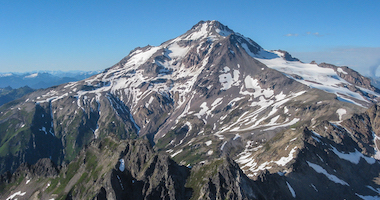











-450x0 (1).jpg)
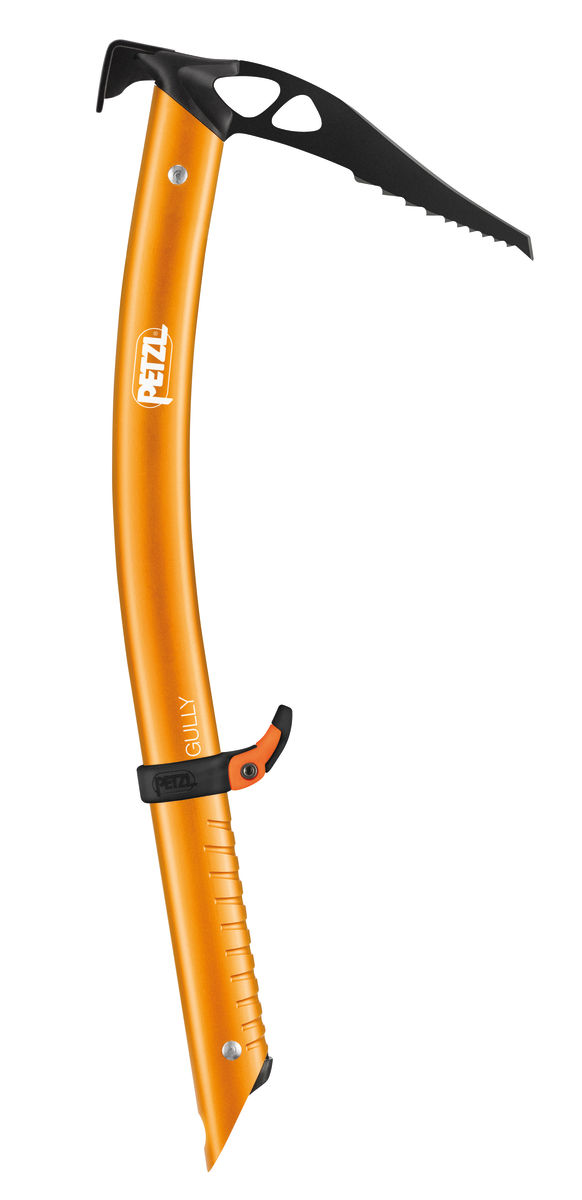





























-450x0.jpg)
